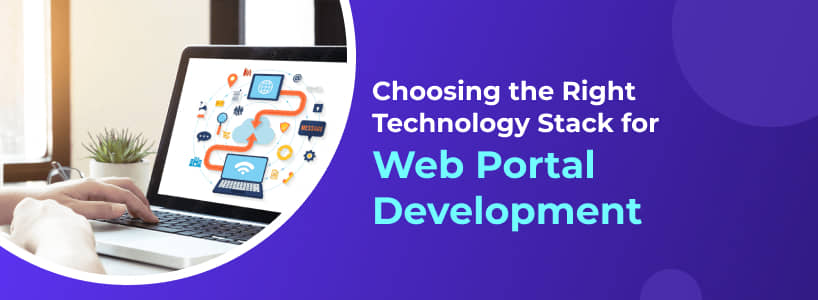Building a web portal is an exciting venture, but with so many technology choices available, selecting the right stack can feel overwhelming. This guide will equip you to make an informed decision, ensuring your Web Portal Development thrives in the digital landscape.
Understanding Your Project Needs
Before diving into specific technologies, take a step back and define your project's core requirements. Here are some key questions to consider:
- Project Goals : What problem are you solving, or what need are you fulfilling with your web portal?
- Target Audience : Who are you building this portal for? Understanding their technical literacy and browsing habits is crucial.
- Functionality : What features are essential for your portal's success? Will it involve complex user interactions or real-time data updates?
- Scalability : Do you anticipate significant growth in users or data over time?
Key Considerations for Your Tech Stack
Once you have a clear vision for your portal, explore the following factors when evaluating technology options:
- Backend Technologies : This refers to the server-side infrastructure that powers your portal's functionality. Popular choices include:
- Python (Django) : Known for rapid development and a large community, Django excels at content-heavy portals.
- Node.js (Express.js) : Ideal for real-time applications with high user concurrency due to its asynchronous nature.
- Java (Spring Boot) : A robust framework for enterprise-level applications requiring scalability and security.
- Frontend Technologies : This encompasses the user interface (UI) that users interact with. Here are some leading frameworks:
- React.js : A versatile library for building dynamic and interactive web interfaces.
- Angular: Offers a structured approach for complex single-page web applications (SPAs).
- Vue.js : Provides a balance between flexibility and ease of use, making it a popular choice for various projects.
- Database Selection : Choose a database that aligns with your data storage needs. Common options include:
- MySQL : A widely-used open-source relational database management system (RDBMS) for structured data.
- MongoDB : A NoSQL database that excels at handling large volumes of unstructured or semi-structured data.
Additional Factors to Consider
- Developer Expertise : If your in-house team has experience with a particular technology stack, leveraging that expertise can save time and resources.
- Security : Prioritize technologies with strong security features built-in, especially if your portal handles sensitive user data.
- Community and Support : A large and active developer community ensures access to resources, tutorials, and troubleshooting assistance.
Conclusion
Choosing the right technology stack is a crucial step in web portal development. By carefully considering your project's requirements and these key factors, you'll be well-equipped to select a robust and scalable foundation for your portal's success. Remember, the ideal tech stack isn't just about the latest trends; it's about finding the perfect fit for your specific project goals.

